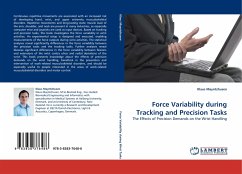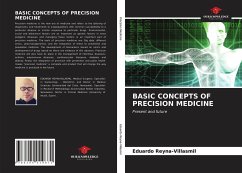
Force Variability during Tracking and Precision Tasks
The Effects of Precision Demands on the Wrist Handling
Versandkostenfrei!
Versandfertig in 6-10 Tagen
39,99 €
inkl. MwSt.

PAYBACK Punkte
20 °P sammeln!
Continuous repetitive movements are associated with an increased risk of developing hand, wrist, and upper extremity musculoskeletal disorders. Repetitive movements and long-lasting static muscle load of the arm, shoulder, and neck are present in many industries, as especially computer mice and joysticks are used as input devices. Based on tracking and precision tasks, this book investigates the force variability in wrist activities. An experimental setup is designed and executed, enabling measurements of the force outputs during wrist activities. The statistical analyses reveal significantly ...
Continuous repetitive movements are associated with an increased risk of developing hand, wrist, and upper extremity musculoskeletal disorders. Repetitive movements and long-lasting static muscle load of the arm, shoulder, and neck are present in many industries, as especially computer mice and joysticks are used as input devices. Based on tracking and precision tasks, this book investigates the force variability in wrist activities. An experimental setup is designed and executed, enabling measurements of the force outputs during wrist activities. The statistical analyses reveal significantly differences in the force variability between the precision tasks and the tracking tasks. Further analyses reveal likewise significant differences in the force variability between flexions and extensions of the wrist contra ulnar and radial deviations of the wrist. This book presents knowledge about the effects of precision demands on the wrist handling, beneficial in the prevention and intervention of work-related musculoskeletal disorders, and should be especially useful to people interested in the areas of work-related musculoskeletal disorders and motor control.












